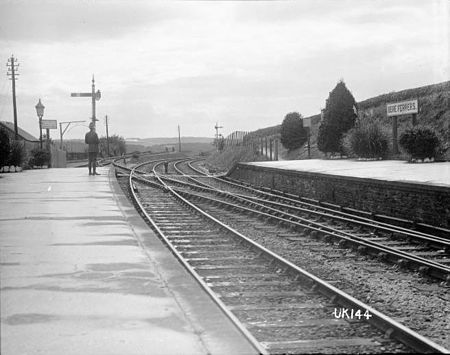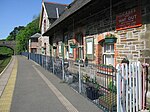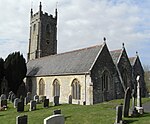Ernesettle is mentioned in the Domesday Book, which documented land in England and Wales, and describes as an ‘old Saxon manor’ there. By the 15th century, there were two farms, Great Ernesettle and Little Ernesettle, both named after William Ernstell, a freeholder of Budshead, who owned land here in 1428. By the 16th century, Ernesettle was a thriving hamlet, and Budshead Mill and a manor house were built on the bank of the river Their date of construction is uncertain, but in 1780 the owner was recorded as Sir Harry Trelawney and the tenant was Mr Robert Nicholls.
It became one of the post-World War II self-contained satellite suburbs built on the north western fringe of the enlarged city of Plymouth, in the county of Devon, England as part of the plan to clear slums and provide new communities for citizens.
It lies beside the River Tamar about half a mile north of the Tamar Road Bridge and Brunel's Royal Albert Railway Bridge. It is the site of the Royal Naval Armaments Depot and MOD Munitions. There are also industrial companies operating in Ernesettle, such as Vi-Spring. The area is currently having a lot of new buildings put in place, such as new houses, flats and the brand new Ernesettle Community School.
Ernesettle has had many notable residents over the years. Sir Francis Drake lived in the community in the 16th Century, and married at St Budeaux Church, where the records are preserved. Comedian Dawn French spent some of her early childhood here. Her grandfather owned and ran the newsagent's. Football's first £1m player, Trevor Francis, also lived in Ernesettle during his childhood after his family moved settlement from Pennycross. Former Scotland international footballer and Plymouth Argyle manager Paul Sturrock has also lived in the suburb.
Ernesettle was one of several sites within the wider Plymouth and Devon area, listed for a possible waste incinerator or energy from waste (EfW) facility. Opposition to this grew considerably with the formation of the S.T.I.F.L.E. (Stop the Incinerator Fouling Land at Ernesettle) group which opposed the plan. On 14 March 2010, the plan to build the incinerator in Ernesettle was scrapped. An EfW facility opened in Barne Barton in 2015. In September 2014, Plymouth Biomass Limited submitted plans to build plans to build a biomass energy facility. Following protests from residents, the plans were dropped early in 2015











